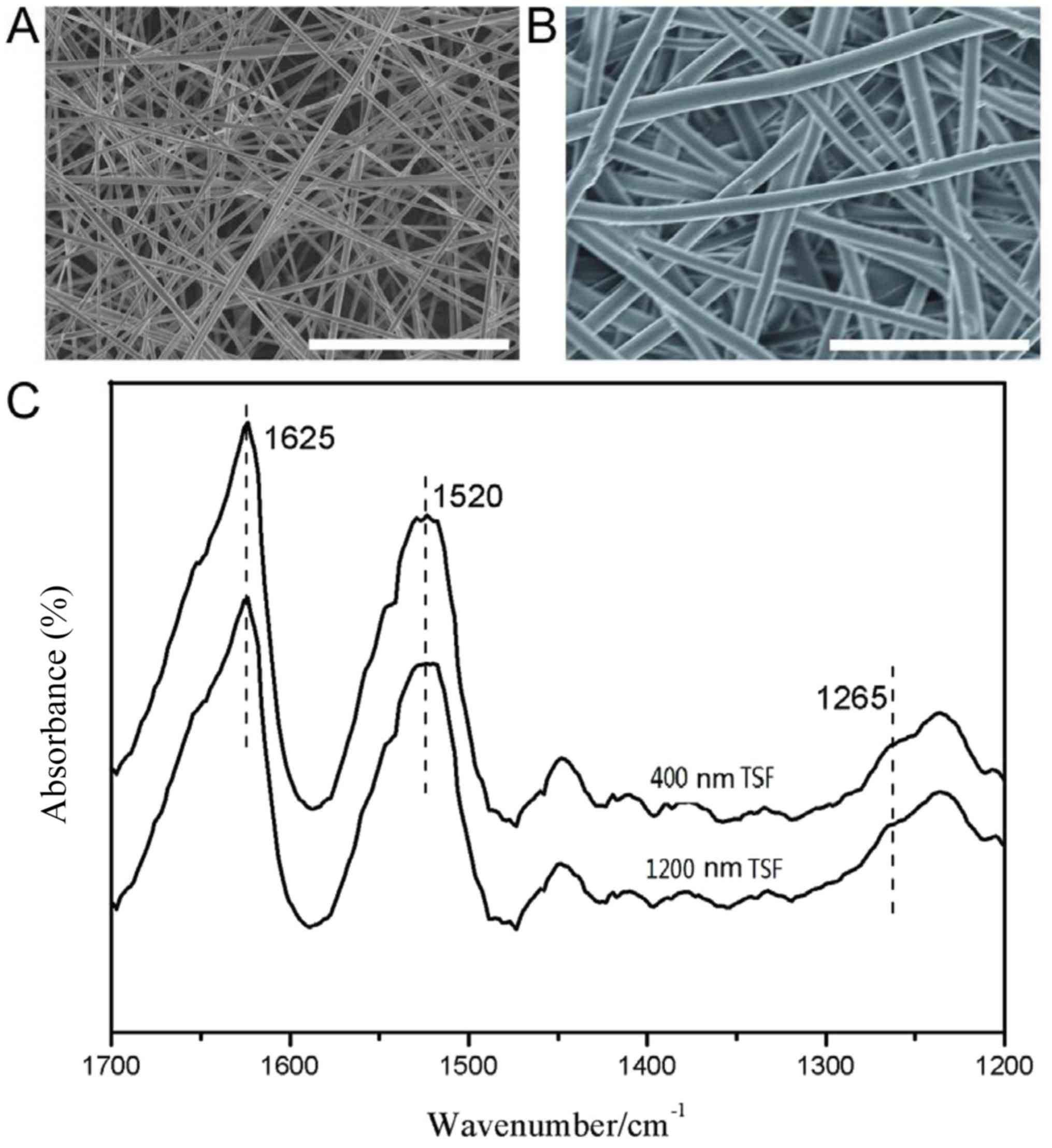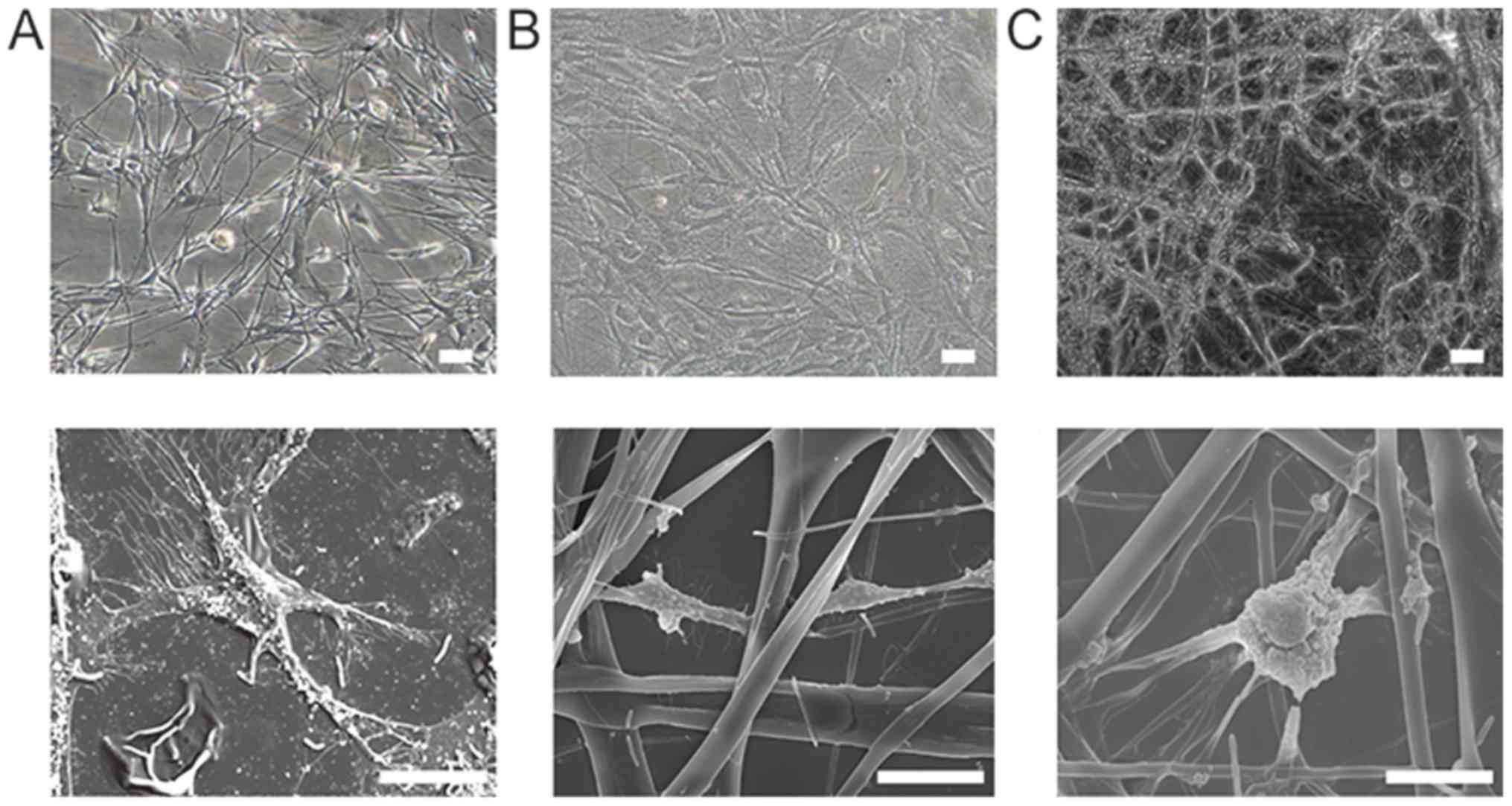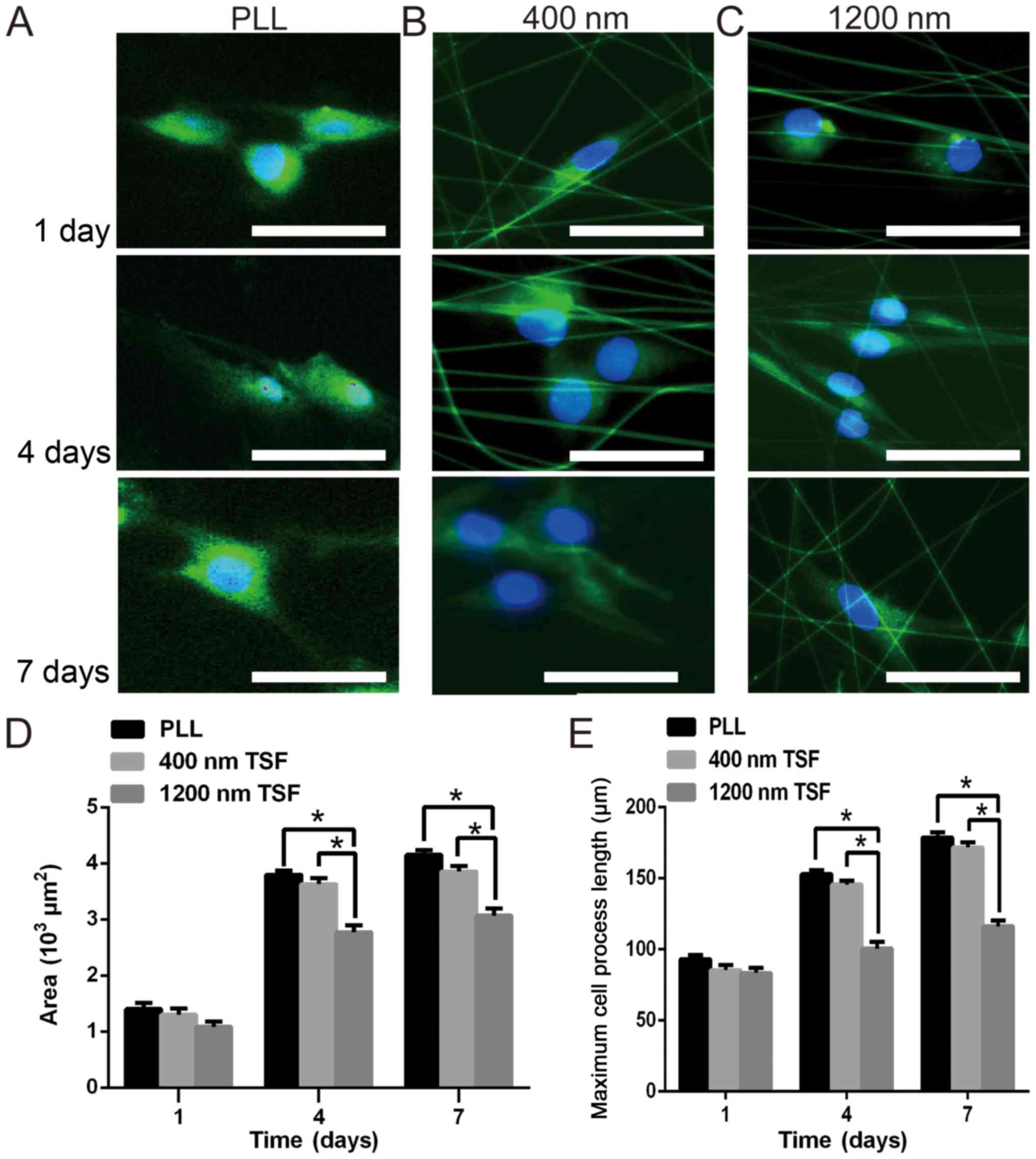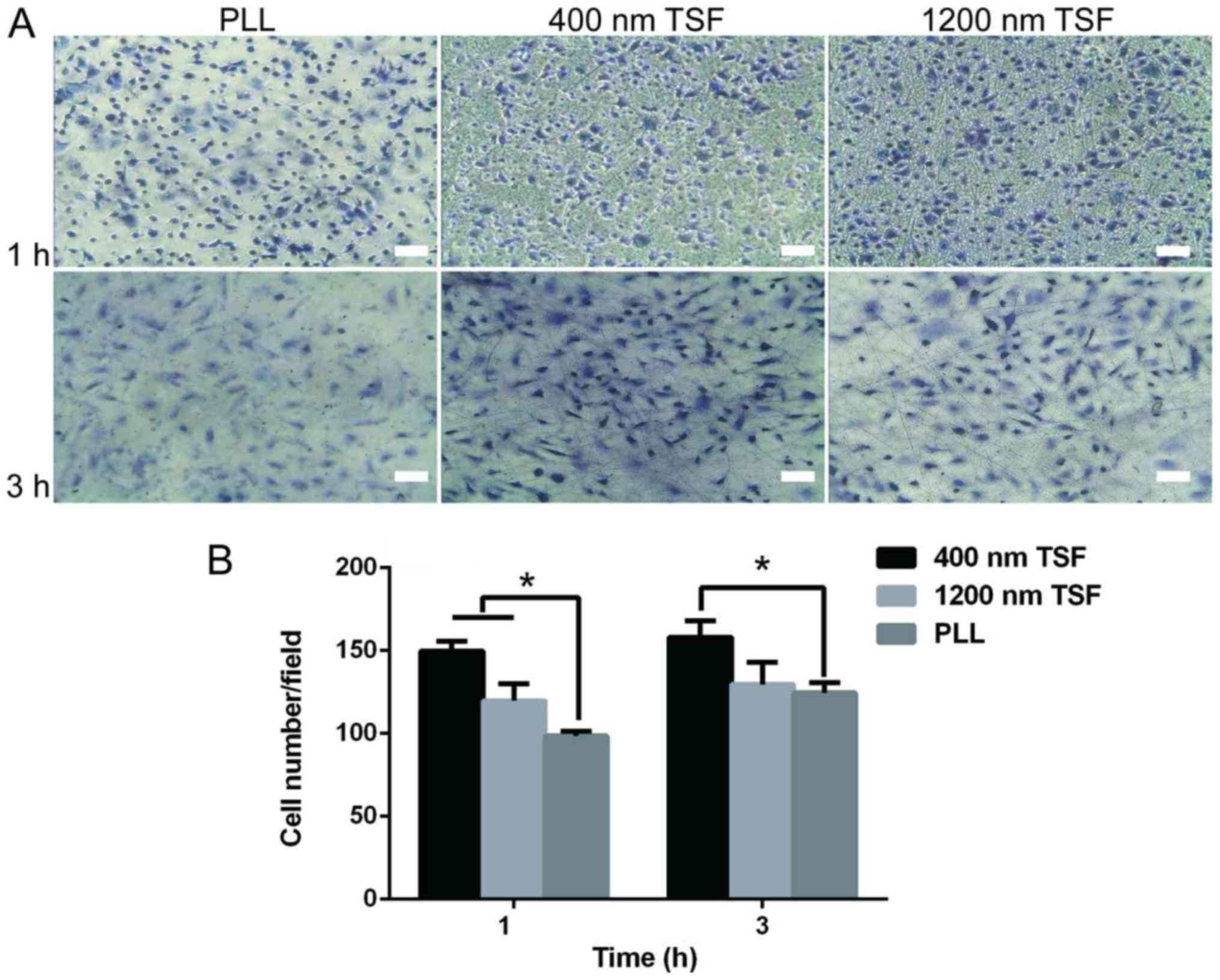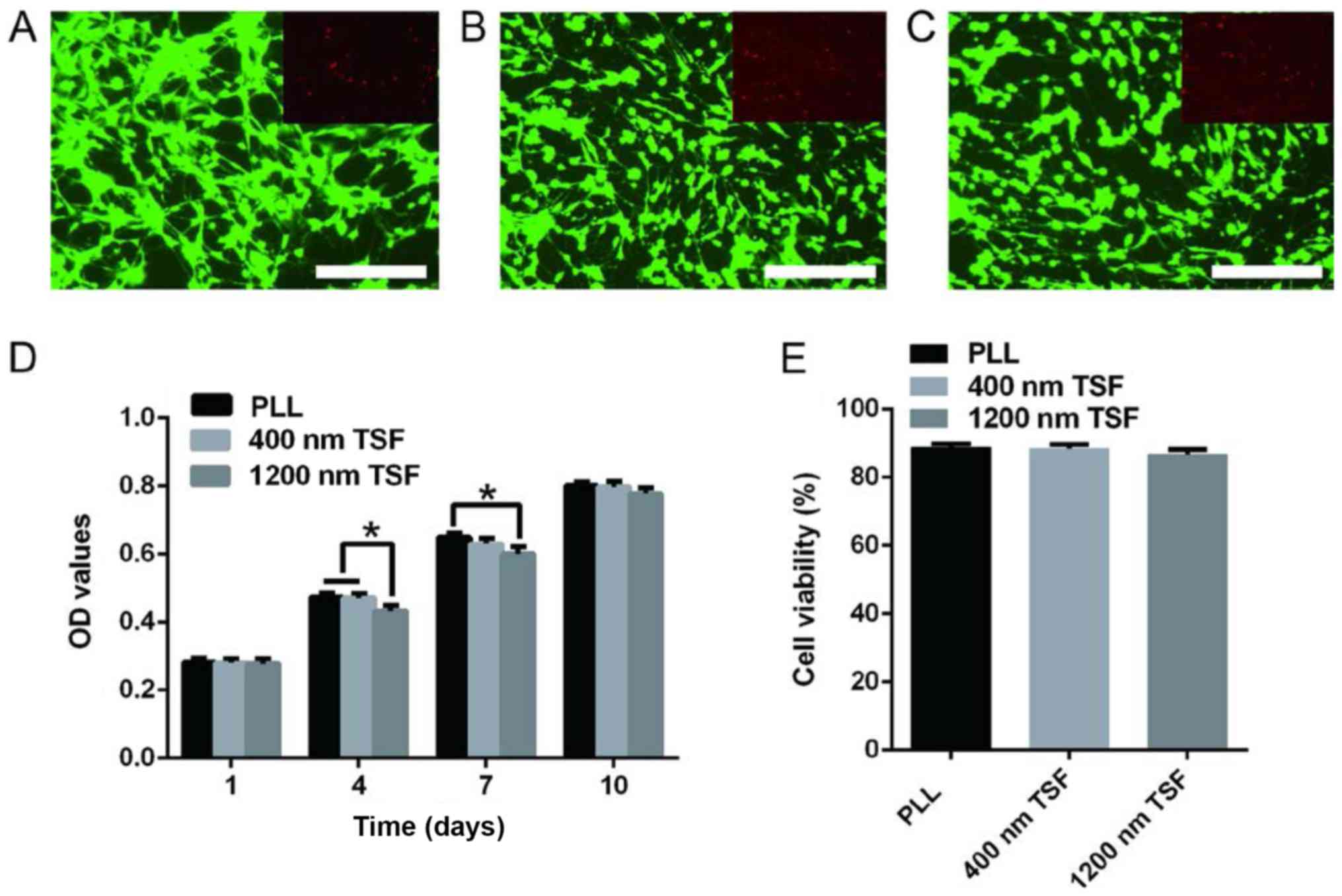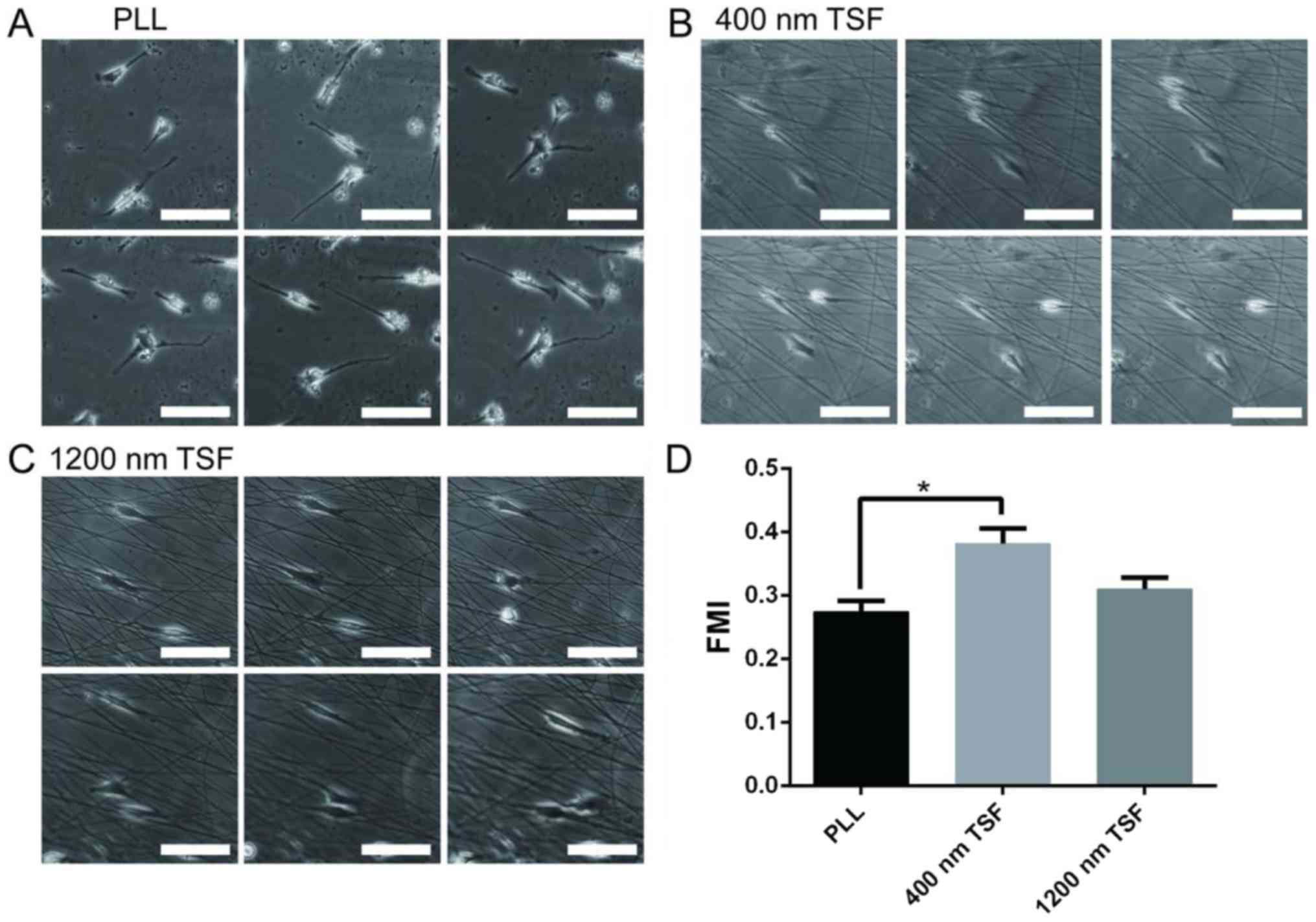|
1
|
Voronova АD, Stepanova OV, Valikhov MP,
Chadin AV, Dvornikov АS, Reshetov IV and Chekhonin VP: Preparation
of human olfactory ensheathing cells for the therapy of spinal cord
injuries. Bull Exp Biol Med. 164:523–527. 2018. View Article : Google Scholar : PubMed/NCBI
|
|
2
|
Straley KS, Foo CW and Heilshorn SC:
Biomaterial design strategies for the treatment of spinal cord
injuries. J Neurotrauma. 27:1–19. 2010. View Article : Google Scholar : PubMed/NCBI
|
|
3
|
Gu M, Gao Z, Li X, Zhao F, Guo L, Liu J
and He X: Feasibility of diffusion tensor imaging for assessing
functional recovery in rats with olfactory ensheathing cell
transplantation after contusive spinal cord injury (SCI). Med Sci
Monit. 23:2961–2971. 2017. View Article : Google Scholar : PubMed/NCBI
|
|
4
|
Gu M, Gao Z, Li X, Guo L, Lu T, Li Y and
He X: Conditioned medium of olfactory ensheathing cells promotes
the functional recovery and axonal regeneration after contusive
spinal cord injury. Brain Res. 1654:43–54. 2017. View Article : Google Scholar : PubMed/NCBI
|
|
5
|
Au E and Roskams AJ: Olfactory ensheathing
cells of the lamina propria in vivo and in vitro. Glia. 41:224–236.
2003. View Article : Google Scholar : PubMed/NCBI
|
|
6
|
Khankan RR, Griffis KG, Haggerty-Skeans
JR, Zhong H, Roy RR, Edgerton VR and Phelps PE: Olfactory
ensheathing cell transplantation after a complete spinal cord
transection mediates neuroprotective and immunomodulatory
mechanisms to facilitate regeneration. J Neurosci. 36:6269–6286.
2016. View Article : Google Scholar : PubMed/NCBI
|
|
7
|
Führmann T, Anandakumaran PN and Shoichet
MS: Combinatorial therapies after spinal cord injury: How can
biomaterials help? Adv Healthc Mater. 6:2017.(doi:
10.1002/adhm.201601130). View Article : Google Scholar
|
|
8
|
Zhang Q, Yan S, You R, Kaplan DL, Liu Y,
Qu J, Li X, Li M and Wang X: Multichannel silk protein/laminin
grafts for spinal cord injury repair. J Biomed Mater Res A.
104:3045–3057. 2016. View Article : Google Scholar : PubMed/NCBI
|
|
9
|
Zhu S, Ge J, Wang Y, Qi F, Ma T, Wang M,
Yang Y, Liu Z, Huang J and Luo Z: A synthetic oxygen
carrier-olfactory ensheathing cell composition system for the
promotion of sciatic nerve regeneration. Biomaterials.
35:1450–1461. 2014. View Article : Google Scholar : PubMed/NCBI
|
|
10
|
Kabiri M, Oraee-Yazdani S, Dodel M,
Hanaee-Ahvaz H, Soudi S, Seyedjafari E, Salehi M and Soleimani M:
Cytocompatibility of a conductive nanofibrous carbon nanotube/poly
(L-Lactic acid) composite scaffold intended for nerve tissue
engineering. EXCLI J. 14:851–860. 2015.PubMed/NCBI
|
|
11
|
Zhou M, Qiao W, Liu Z, Shang T, Qiao T,
Mao C and Liu C: Development and in vivo evaluation of
small-diameter vascular grafts engineered by outgrowth endothelial
cells and electrospun chitosan/poly(ε-caprolactone) nanofibrous
scaffolds. Tissue Eng Part A. 20:79–91. 2014. View Article : Google Scholar : PubMed/NCBI
|
|
12
|
Fan Z, Shen Y, Zhang F, Zuo B, Lu Q, Wu P,
Xie Z, Dong Q and Zhang H: Control of olfactory ensheathing cell
behaviors by electrospun silk fibroin fibers. Cell Transplant. 22
Suppl 1:S39–S50. 2013. View Article : Google Scholar : PubMed/NCBI
|
|
13
|
Sofia S, McCarthy MB, Gronowicz G and
Kaplan DL: Functionalized silk-based biomaterials for bone
formation. J Biomed Mater Res. 54:139–148. 2001. View Article : Google Scholar : PubMed/NCBI
|
|
14
|
Pavoni E, Tozzi S, Tsukada M and Taddei P:
Structural study on methacrylamide-grafted Tussah silk fibroin
fibres. Int J Biol Macromol. 88:196–205. 2016. View Article : Google Scholar : PubMed/NCBI
|
|
15
|
Gao Y, Shao W, Qian W, He J, Zhou Y, Qi K,
Wang L, Cui S and Wang R: Biomineralized poly (l-lactic-co-glycolic
acid)-tussah silk fibroin nanofiber fabric with hierarchical
architecture as a scaffold for bone tissue engineering. Mater Sci
Eng C Mater Biol Appl. 84:195–207. 2018. View Article : Google Scholar : PubMed/NCBI
|
|
16
|
Asakura T, Nishi H, Nagano A, Yoshida A,
Nakazawa Y, Kamiya M and Demura M: NMR analysis of the fibronectin
cell-adhesive sequence, Arg-Gly-Asp, in a recombinant silk-like
protein and a model peptide. Biomacromolecules. 12:3910–3916. 2011.
View Article : Google Scholar : PubMed/NCBI
|
|
17
|
Min BM, Lee G, Kim SH, Nam YS, Lee TS and
Park WH: Electrospinning of silk fibroin nanofibers and its effect
on the adhesion and spreading of normal human keratinocytes and
fibroblasts in vitro. Biomaterials. 25:1289–1297. 2004. View Article : Google Scholar : PubMed/NCBI
|
|
18
|
Yang F, Murugan R, Wang S and Ramakrishna
S: Electrospinning of nano/micro scale poly(L-lactic acid) aligned
fibers and their potential in neuronal tissue engineering.
Biomaterials. 26:2603–2610. 2005. View Article : Google Scholar : PubMed/NCBI
|
|
19
|
Smeal RM, Rabbitt R, Biran R and Tresco
PA: Substrate curvature influences the direction of nerve
outgrowth. Ann Biomed Eng. 33:376–382. 2005. View Article : Google Scholar : PubMed/NCBI
|
|
20
|
Smeal RM and Tresco PA: The influence of
substrate curvature on neurite outgrowth is cell type dependent.
Exp Neurol. 213:281–292. 2008. View Article : Google Scholar : PubMed/NCBI
|
|
21
|
Qu J, Wang D, Wang H, Dong Y, Zhang F, Zuo
B and Zhang H: Electrospun silk fibroin nanofibers in different
diameters support neurite outgrowth and promote astrocyte
migration. J Biomed Mater Res A. 101:2667–2678. 2013. View Article : Google Scholar : PubMed/NCBI
|
|
22
|
Wang J, Ye R, Wei Y, Wang H, Xu X, Zhang
F, Qu J, Zuo B and Zhang H: The effects of electrospun TSF
nanofiber diameter and alignment on neuronal differentiation of
human embryonic stem cells. J Biomed Mater Res A. 100:632–645.
2012. View Article : Google Scholar : PubMed/NCBI
|
|
23
|
Panda N, Bissoyi A, Pramanik K and Biswas
A: Development of novel electrospun nanofibrous scaffold from P.
Ricini and A. Mylitta silk fibroin blend with improved surface and
biological properties. Mater Sci Eng C Mater Biol Appl. 48:521–532.
2015. View Article : Google Scholar : PubMed/NCBI
|
|
24
|
Khamhaengpol A and Siri S: Composite
electrospun scaffold derived from recombinant fibroin of weaver ant
(Oecophylla smaragdina) as cell-substratum. Appl Biochem
Biotechnol. 183:110–125. 2010. View Article : Google Scholar
|
|
25
|
Yang R, Wu P, Wang X, Liu Z, Zhang C, Shi
Y, Zhang F and Zuo B: A novel method to prepare tussah/Bombyx mori
silk fibroin-based films. RSC Adv. 8:22069–22077. 2018. View Article : Google Scholar
|
|
26
|
Parker J: The protection of laboratory
animals: A response to Stephenson. J Med Philos. 19:389–394. 1994.
View Article : Google Scholar : PubMed/NCBI
|
|
27
|
Min BM, Jeong L, Nam YS, Kim JM, Kim JY
and Park WH: Formation of silk fibroin matrices with different
texture and its cellular response to normal human keratinocytes.
Int J Biol Macromol. 34:281–288. 2004. View Article : Google Scholar : PubMed/NCBI
|
|
28
|
Zhuang Y, Zhang Q, Feng J, Wang N, Xu W
and Yang H: The effect of native silk fibroin powder on the
physical properties and biocompatibility of biomedical polyurethane
membrane. Proc Inst Mech Eng H. 231:337–346. 2017. View Article : Google Scholar : PubMed/NCBI
|
|
29
|
Qi Y, Wang H, Wei K, Yang Y, Zheng RY, Kim
IS and Zhang KQ: A review of structure construction of silk fibroin
biomaterials from single structures to multi-level structures. Int
J Mol Sci. 18:pii: E237. 2017. View Article : Google Scholar
|
|
30
|
Zhang W, Chen L, Chen J, Wang L, Gui X,
Ran J, Xu G, Zhao H, Zeng M, Ji J, et al: Silk fibroin biomaterial
shows safe and effective wound healing in animal models and a
randomized controlled clinical trial. Adv Healthc Mater.
6:2017.(doi: 10.1002/adhm.201700121). View Article : Google Scholar
|
|
31
|
Fernández-García L, Marí-Buyé N, Barios
JA, Madurga R, Elices M, Pérez-Rigueiro J, Ramos M, Guinea GV and
González-Nieto D: Safety and tolerability of silk fibroin hydrogels
implanted into the mouse brain. Acta Biomater. 45:262–275. 2016.
View Article : Google Scholar : PubMed/NCBI
|
|
32
|
Zhang Z, Yoo R, Wells M, Beebe TP Jr,
Biran R and Tresco P: Neurite outgrowth on well-characterized
surfaces: Preparation and characterization of chemically and
spatially controlled fibronectin and RGD substrates with good
bioactivity. Biomaterials. 26:47–61. 2005. View Article : Google Scholar : PubMed/NCBI
|
|
33
|
Luan XY, Wang Y, Duan X, Duan QY, Li MZ,
Lu SZ, Zhang HX and Zhang XG: Attachment and growth of human bone
marrow derived mesenchymal stem cells on regenerated antheraea
pernyi silk fibroin films. Biomed Mater. 1:181–187. 2006.
View Article : Google Scholar : PubMed/NCBI
|
|
34
|
Minoura N, Aiba S, Gotoh Y, Tsukada M and
Imai Y: Attachment and growth of cultured fibroblast cells on silk
protein matrices. J Biomed Mater Res. 29:1215–1221. 1995.
View Article : Google Scholar : PubMed/NCBI
|
|
35
|
Shen Y, Qian Y, Zhang H, Zuo B, Lu Z, Fan
Z, Zhang P, Zhang F and Zhou C: Guidance of olfactory ensheathing
cell growth and migration on electrospun silk fibroin scaffolds.
Cell Transplant. 19:147–157. 2010. View Article : Google Scholar : PubMed/NCBI
|
|
36
|
Aznar-Cervantes S, Pagán A, Martínez JG,
Bernabeu-Esclapez A, Otero TF, Meseguer-Olmo L, Paredes JI and
Cenis JL: Electrospun silk fibroin scaffolds coated with reduced
graphene promote neurite outgrowth of PC-12 cells under electrical
stimulation. Mater Sci Eng C Mater Biol Appl. 79:315–325. 2017.
View Article : Google Scholar : PubMed/NCBI
|















